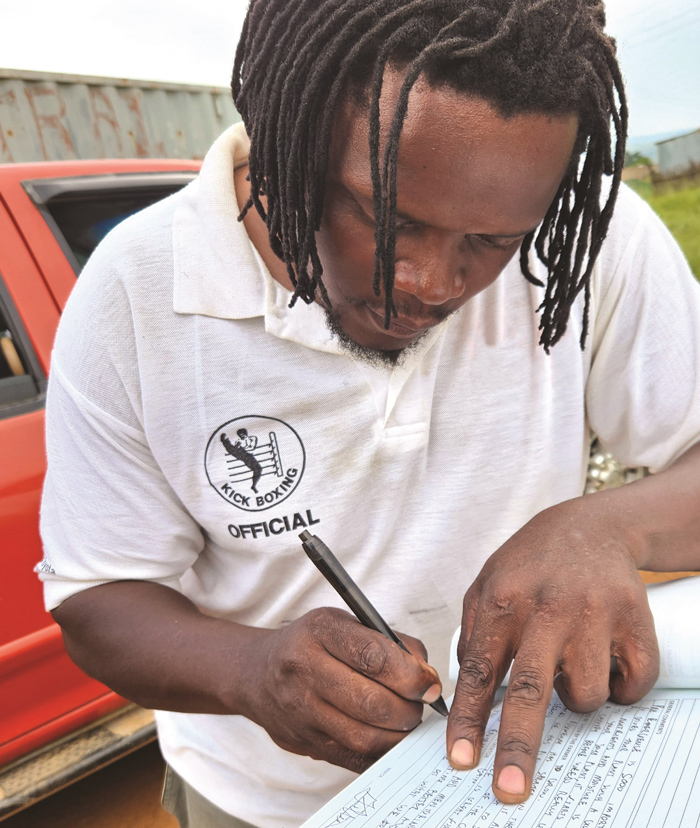May 2024
| RICHARD MCPHERSON, AGRIBUSINESS AND PROJECT MANAGEMENT CONSULTANT |
 |
The only way to know whether or not you are improving as a farmer is to have a benchmark to measure your success. To develop in farming, you need consistent progress over the years. This can be done by collecting and analysing as much data as possible.
If you have never recorded any data, now is a good time to start doing it. To get a starting point, consider recording the figures that you can remember, such as last season’s data. It is important to record only quantitative data – yield, prices, planting dates, harvesting dates, expenses, incomes etc.
You can decide what the most important aspects are to consider. Once you have decided what you would like to keep track of, choose an easy method of capturing the information. This can be an excel spreadsheet or in a written form in a logbook, whatever suits you best.
Be honest, accurate, thorough and consistent in the recordkeeping. Try to get into a habit of recording information as it comes in. Once you have finished harvesting a land, calculate your average yield on that field by using your weigh slips and record it. When you spend money on maintenance, record it. When you purchase your inputs, record your expenses. Try your best not to miss anything, as this will alter the accuracy of your data.
WHAT TO MEASURE?
The farming results for a particular year are made up of the physical aspects of production and the current or projected value of the crops produced. Once you have assessed these aspects in detail, you can begin to benchmark what standards to measure against.
The positive or negative trends of the production benchmarks for your farm management potential should take into account the different soil types, soil depth, effective rooting depths, climate and average long-term rainfall. The yield for the 2023/2024 season may be far below the average for the last few years, with below-average rainfall and extreme heatwaves at critical summer crop flowering or seed-filling stages. The final yields will reflect which farming practices helped you to produce a crop.
Although a farmer has no control over the climate, keeping record of climatic conditions will help you to better understand the data. So make a point of recording aspects such as the rainfall and extreme weather events – hail, drought etc.
For example, if your yield results are low and your rainfall records were low in the same year, then you can better understand the correlation. Another advantage of recording the weather is that you can learn to have a better understanding of the weather, and in some instances even make rough predictions of what the weather may do in the future.
RESOURCE ASSESSMENT
Resource assessment will cover areas of the farm suitable for crops, livestock or irrigation water rights, infrastructure such as dams, sheds and processing plants, roads and the condition of the pastures, amongst others.
The climatic zone of the farm and distribution of the average annual rainfall will have an impact on the agronomic potential of the crops to be produced.
Soil types and soil depth will change very little over the years. This means that a one-time assessment of all your lands doesn’t need to be repeated every year. Together with soil sampling and the fertility status, the phosphate, potassium and pH levels are the bare minimum factors that should be well-known by a farmer. Fertilisation for each crop can then be properly done.
The farm plan after this assessment should be to eliminate planting in all the shallow, poor soils on the pastures. Perhaps the medium- and high-potential lands can be planted according to a high-yield rotation system and more drought-resistant crops on the medium-potential soils. (If you don’t understand the gross margin analysis, please learn what this concept means.)
Looking at the soil potential is one aspect in deciding on the yield levels that your input costs will generate. More fertiliser on medium-potential soils may not translate into higher yields. The physical analysis impacts on the yield and therefore on the income and profit generated.
The yield levels on good or medium soils must be quantified to ensure that they will be profitable and determine what input costs are needed to produce the expected yields. If you have just started farming, find out what experienced farmers are producing on similar soils as a benchmark to aim at.
TO MEASURE, IS TO KNOW
Key performance indicators (KPIs) are metrics, or a way of measuring the performance or production that can track the yield per hectare of sunflowers, wheat, maize, soybeans, drybeans, sorghum and others over many seasons, for example. A group of KPIs can be weighted individually and combined to produce a picture of your crop farming for each past, current or future production season.
Grain farmers often remember the best years and forget about the really bad drought years. If you can look back over the years, add up your actual grain delivery slips against the area planted. The good and bad years make up the long pro-duction trends.
The financial risk for production for each different crop on a certain farm or land can then be determined with actual records. For instance, the analysis may indicate that profitable maize production can only be achieved on your deepest and most fertile soils. Other crops such as soybeans, sunflowers or sorghum may have to be included in the rotational planning to make the farming business viable at a lower financial risk. Viability is determined by production and the future prices used to complete a full gross margin analysis.
Some factors to measure on the income side can be the yield in kilograms or tons per hectare, price per ton, total income per hectare and total income for the enterprise.
On the cost side for seed used, the metrics will include the kgs/ha planted, kernels or pips planted per hectare, and the final plant population per hectare. Fertiliser, including root growth enhancers, leaf sprays and micronutrient applications, as a major input should also be measured for kgs/ha planned and planted.
Each of the following cost centres should be measured against what was planned and what was used in any season: Herbicides, insecticides, fungicides, crop insurance, fuel, harvesting, seasonal labour, packaging material, marketing, irrigation, mechanical repairs and maintenance and hire of equipment.
The financial analysis can include the total income per hectare, total margin over direct cost/ha, margin over fixed costs/ha, margin over R1,00 of the direct costs and margin per ton of the yield.
‘To measure is to know’ is the only way forward, ensuring that you can continue farming and following your passion in life.

Comparing information between lands and seasons will help you to make informed decisions.
Publication: May 2024
Section: Pula/Imvula